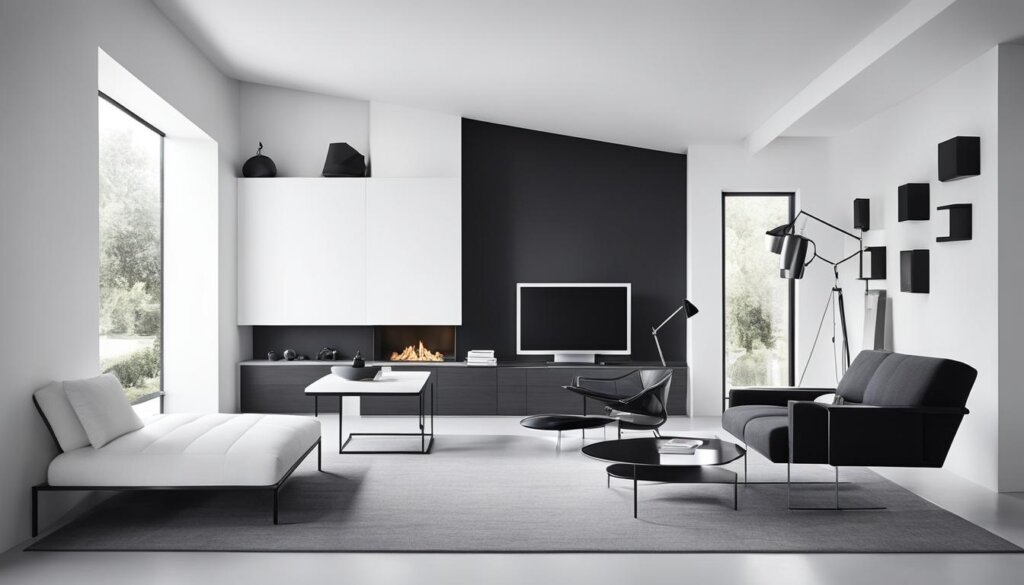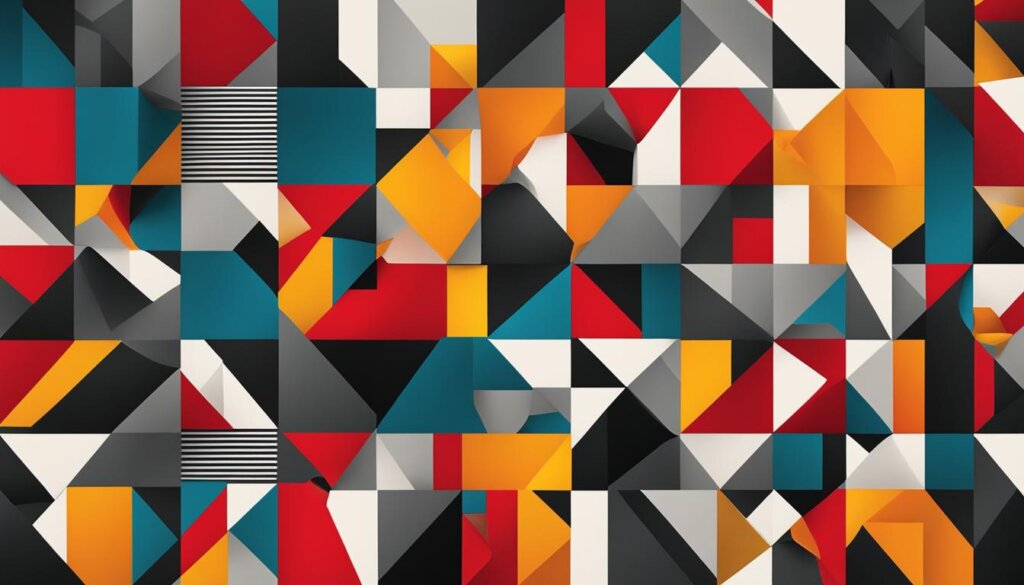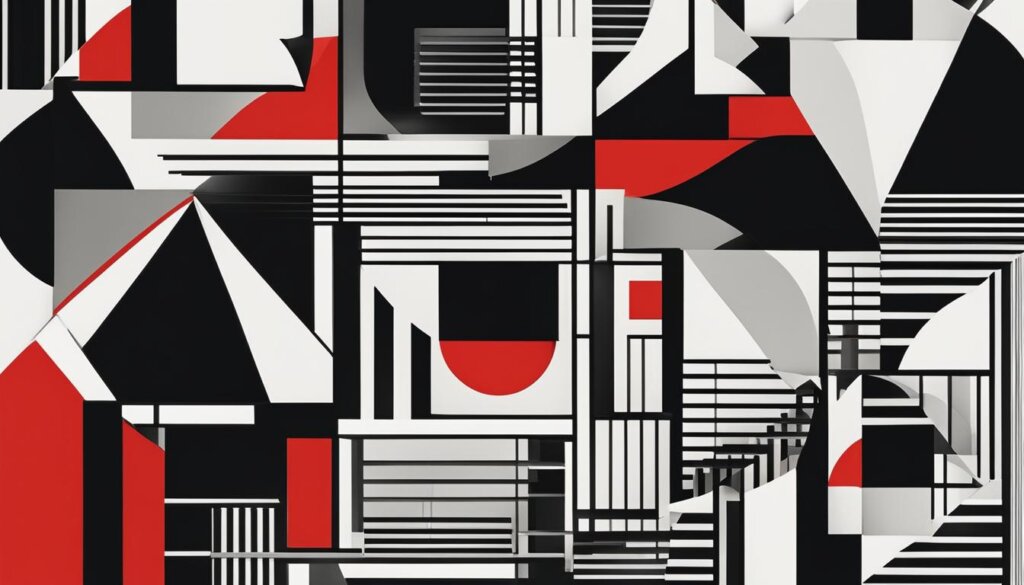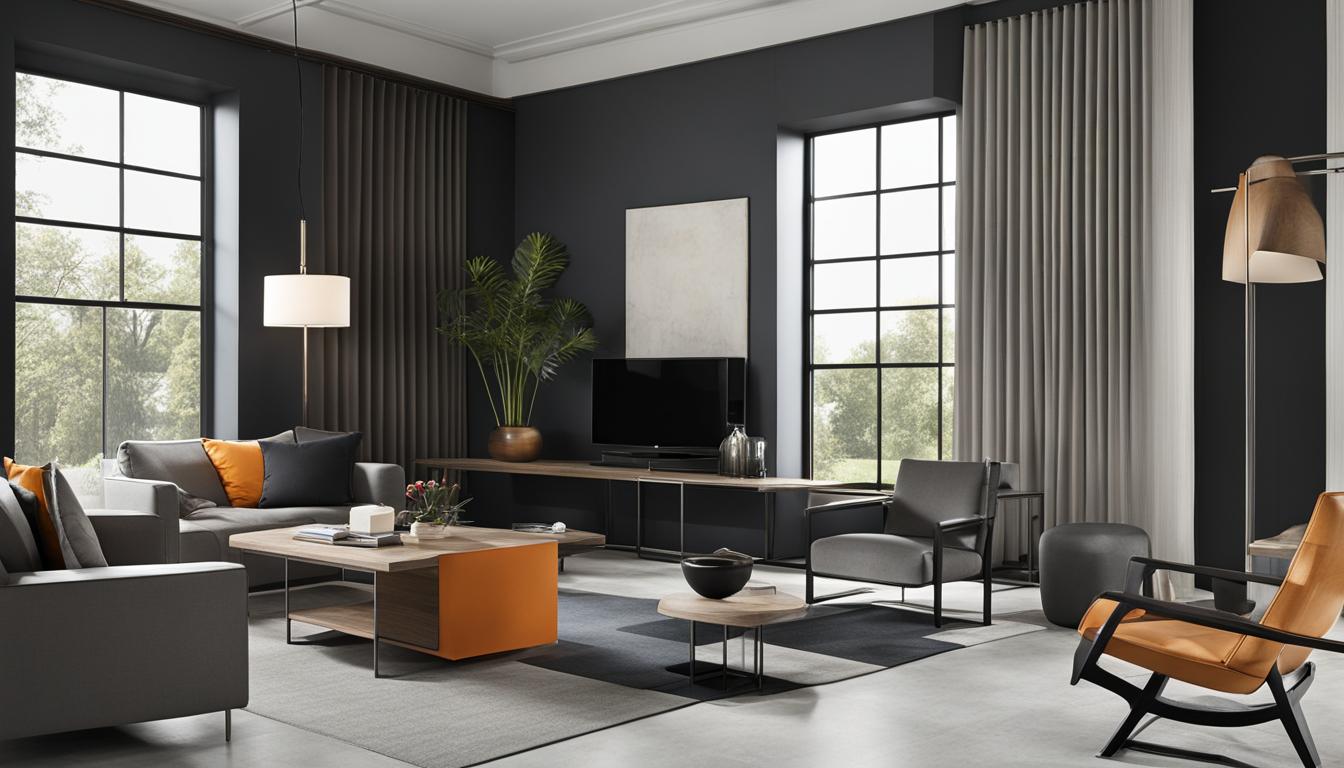When it comes to design principles, one art movement stands out for its lasting impact: the Bauhaus aesthetic. Emerging in Germany in 1919, Bauhaus design revolutionized modernism, minimalism, and functionalism. This influential art movement became a driving force in architecture, interior design, and visual aesthetics.
The key to Bauhaus design lies in its commitment to simplicity and geometric shapes. By prioritizing functionality and integrating art with technology, Bauhaus created a visual language that continues to inspire and shape contemporary design.
From architectural marvels to thoughtfully crafted interiors, the influence of Bauhaus design can be seen in the clean lines, bold colors, and harmonious compositions. By embracing industrial materials and the unity of art and craft, Bauhaus designers created a timeless legacy that remains relevant to this day.
In this series, we will delve into the origins and key characteristics of Bauhaus design. We will explore its impact on the art world and contemporary views in art and design. Join us as we uncover the fascinating world of the Bauhaus aesthetic and discover how its principles continue to shape the way we perceive and create.
Origins of Bauhaus Design
The Bauhaus design movement traces its roots back to Germany in 1919 when architect Walter Gropius established the renowned Bauhaus school. This innovative institution aimed to bring together the worlds of fine arts, crafts, and industrial design, drawing inspiration from the arts and crafts movement as well as the De Stijl movement.
Bauhaus design was characterized by its commitment to creating functional, practical, and affordable designs that could be mass-produced. The emphasis was on simplicity, geometric shapes, and the integration of new materials and technologies. By prioritizing functionality and accessibility, the Bauhaus movement sought to bridge the gap between art and everyday life.
Despite the school’s closure in 1933, the influence of Bauhaus design remains profound. Its impact on architecture, art, and design can still be seen today, as its principles have shaped modern design practices worldwide.

Key Characteristics of Bauhaus Design
Bauhaus design is characterized by its emphasis on functionality, minimalism, and the use of industrial materials and geometric shapes. It seeks to achieve a unity of art and craft, creating works that are both visually appealing and practical in their purpose. The timelessness of Bauhaus design is evident in its enduring influence on contemporary art and design.
The Functionality of Bauhaus Design
The functionality of Bauhaus design is its defining feature. The focus is on creating objects and spaces that serve a purpose, with form following function. This approach rejects unnecessary ornamentation and emphasizes the practical use of designs. Bauhaus designers believed that good design should improve people’s lives and make everyday tasks easier and more efficient.
Minimalism and Industrial Materials
Bauhaus design embraces minimalism, which is characterized by simplicity and the elimination of excess. This minimalist aesthetic is achieved through the use of clean lines, geometric shapes, and a limited color palette. Industrial materials such as steel, glass, and concrete are favored for their durability and modern appeal. These materials give Bauhaus designs a sleek and industrial look, further emphasizing their functionality and practicality.
The Unity of Art and Craft
Bauhaus design seeks to bridge the gap between fine art and craftsmanship. It aims to elevate everyday objects to the level of art while maintaining their functionality. The integration of art and craft is achieved through careful attention to detail, innovative techniques, and the use of skilled craftsmanship. By blurring the boundaries between art and craft, Bauhaus design creates a holistic and cohesive aesthetic.
The Timelessness and Total Work of Art
Bauhaus design strives for timelessness, creating designs that transcend trends and remain relevant over time. The focus is on creating enduring works that are not bound by a particular era or style. Additionally, Bauhaus design embraces the concept of the total work of art, where all aspects of a design, from architecture to furniture to typography, are considered as part of a unified whole. This holistic approach creates harmonious environments that are aesthetically pleasing and functional.

Contemporary Views in Art and Design
Contemporary art and design have been significantly influenced by the timeless principles of Bauhaus Design. The impact of Bauhaus can be seen in various fields, including graphic design, architecture, furniture, digital interfaces, and public art. With its emphasis on simplicity and functionality, Bauhaus has inspired a wave of minimalist aesthetics that continue to shape modern creativity and aesthetics.
In the world of graphic design, Bauhaus principles have led to clean, sleek designs that prioritize clear communication and effective visual storytelling. The use of bold geometric shapes and typography creates visually impactful and memorable designs.
In architecture and furniture, Bauhaus’s influence can be seen in designs that prioritize functionality, minimalism, and the use of industrial materials. Buildings and furniture embody the concept of “form follows function,” creating spaces and objects that are both visually appealing and practical.
Digital interfaces, such as websites and apps, have also embraced the principles of Bauhaus Design. The minimalist aesthetics and focus on user experience have resulted in clean and intuitive interfaces that enhance usability and engagement.
Furthermore, Bauhaus Design has sparked a movement towards sustainable practices in art and design. Contemporary designers are exploring new materials and techniques to create eco-friendly and socially responsible creations. This commitment to sustainability reflects Bauhaus’s vision of integrating art with technology and addressing social challenges through design.
The influence of Bauhaus extends beyond the realms of art and design, reaching into art education. The experimental and innovative approach of the Bauhaus movement has shaped contemporary art education practices, encouraging students to explore and push boundaries. Bauhaus’s emphasis on interdisciplinary collaboration and the unity of art and craft continues to inspire art education curricula worldwide.

The Impact of Bauhaus Design on the Art World
Bauhaus Design revolutionized the art world with its influential approach to functional simplicity and minimalist aesthetics. This groundbreaking movement, rooted in modernism, transcended disciplines, leaving an indelible mark on fields such as architecture, graphic design, and interior design.
The enduring legacy of Bauhaus Design continues to shape contemporary art and design. Its principles of clean lines, geometric forms, and honest materials have become synonymous with modern aesthetics. By rejecting excessive ornamentation, Bauhaus Design embraced functional simplicity and showcased the inherent beauty of everyday objects.
Furthermore, Bauhaus Design fostered an interdisciplinary approach to art education. Through collaborative learning, students were encouraged to explore the intersection of various creative disciplines. This holistic mindset empowered artists and designers to push the boundaries of their respective fields, resulting in innovative and progressive artworks.
The timeless beauty and forward-thinking principles of Bauhaus Design have established it as a prominent force in the art world. Its influence can be witnessed in the minimalist aesthetics of contemporary design, as well as in the continued emphasis on interdisciplinary art education. Bauhaus Design’s impact on modernism remains undeniable, reminding us of the profound legacy this movement has left on the world of art and design.

